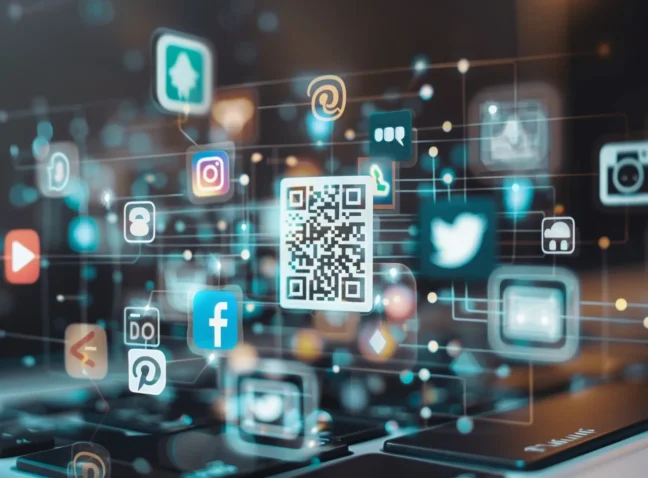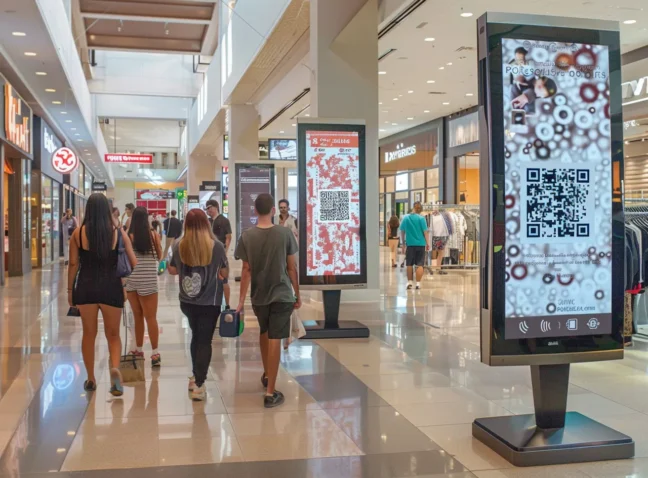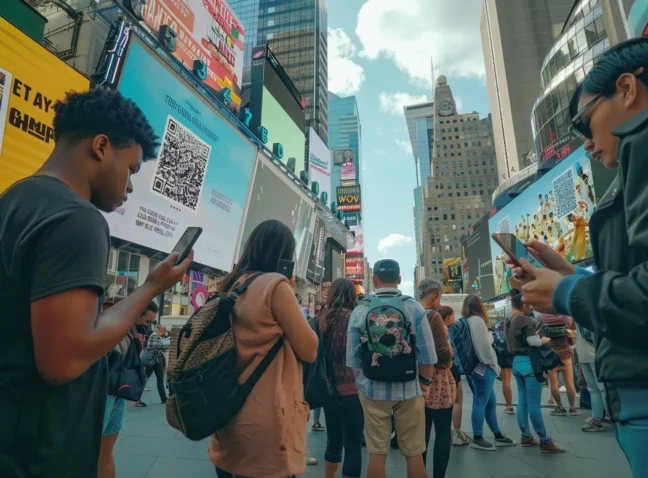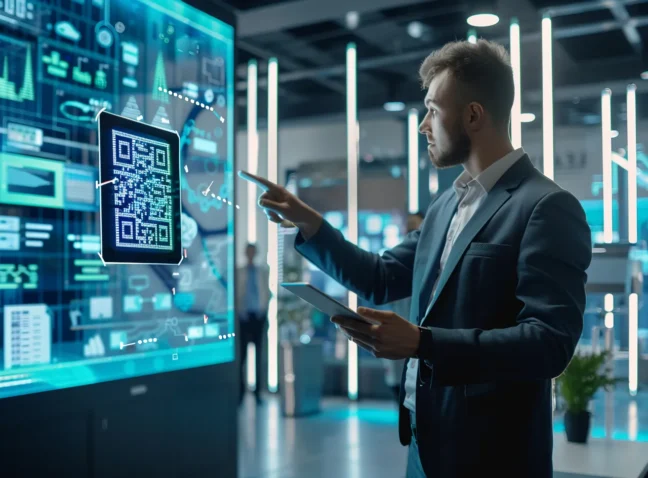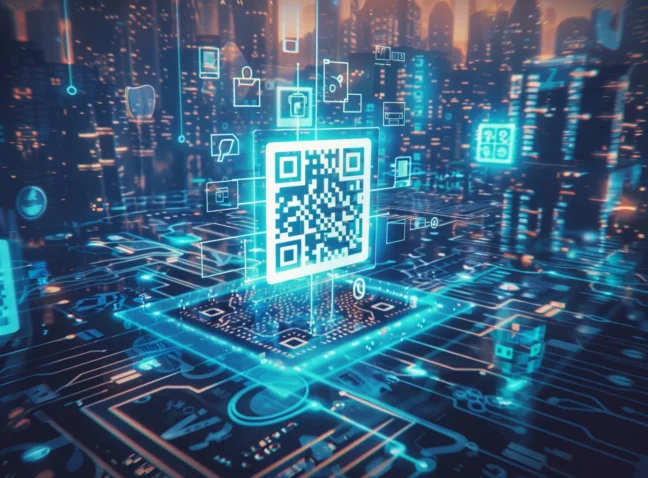Sharing photos has always been about capturing moments and easily sharing them with others. QR codes have stepped in as a technological advantage, making it super easy to link digital memories with friends and family in an instant. Just imagine: no more messing with long links or email attachments. Now, a quick scan is all it takes to open up a whole world of images, albums, or even videos. This simple scan can take you straight to those special memories. Let’s explore how this nifty tech is reshaping our photo-sharing habits, making it simpler and more fun for everyone. Thinking about giving your photo sharing a modern twist?
Why Choose QR Codes for Image Sharing? Release the Potential of Visual Communication
In today’s digital landscape, photo sharing has become second nature, both personally and professionally. But traditional methods often fall short, lacking the efficiency and engagement needed, especially in professional circles. Enter QR codes – the modern solution bridging the gap between physical and digital realms.
QR codes simplify photo sharing, allowing instant access to galleries with a simple scan. No more tedious URL typing or handling physical copies. This streamlined experience enhances user engagement, ensuring seamless interaction with shared content.
For businesses, QR codes signify professionalism and innovation in content sharing. They seamlessly integrate into marketing materials, event signage, and product packaging, providing direct links to curated visual content. Not only do they captivate attention, but they also offer measurable interaction points, enabling businesses to track engagement and optimize their strategies.
What’s more, QR codes offer superior flexibility. Unlike static URLs or printed photos, their destinations can be updated without altering the code itself. This means businesses can effortlessly refresh their shared content, ensuring their audience always has access to the latest visuals and galleries.
QR Codes Revolutionizing Photo Sharing in the Digital Age
In today’s digital landscape, QR codes are reshaping the way we share photos. According to recent statistics, QR code usage for photo sharing surged by 30% in the past year alone (Forbes 2023). It’s not surprising, considering that 75% of consumers find QR codes helpful for accessing photo galleries (Business Insider 2022). As we look ahead, TechCrunch predicts that QR codes will dominate the photo sharing market by 2025, capturing a projected market share of 45% (TechCrunch 2023).
Businesses are taking notice, with 85% reporting increased user engagement after integrating QR codes into their photo sharing strategies (CNBC 2022). This trend aligns with MarketWatch’s forecast that the global QR code market size for photo sharing will reach $5.8 billion by 2027 (MarketWatch 2023). QR codes offer a convenient and efficient way to share and access photos, benefiting both consumers and businesses alike.
Unveiling the Magic: QR Codes for Immersive Photo Sharing Experience
Embracing QR codes for image sharing is becoming increasingly popular, offering a seamless way to connect users with visual content. This intuitive approach simplifies access to vast galleries and albums, making it a favored choice for both personal and professional use. The past year alone has witnessed a remarkable 30% uptick in the adoption of QR codes for this purpose, indicating a significant shift in how we share and view images. This trend suggests a broader acceptance and reliance on QR technology for bridging the gap between digital content and its audience:
- Significant Growth: The past year has seen a 30% increase in the adoption of QR codes for image sharing, showcasing a substantial rise in popularity and user preference. This trend, highlighted by Forbes in 2023, underscores the growing confidence in QR technology as a reliable medium for photo distribution.
- Consumer Approval: A staggering 75% of consumers now find QR codes to be an invaluable tool for accessing photo galleries, according to a 2022 report by Business Insider. This overwhelming approval rate emphasizes the user-friendly nature of QR codes, making them a go-to solution for viewing digital image collections.
- Market Dominance Forecast: TechCrunch’s 2023 prediction places QR codes at the forefront of the image sharing market, with an expected 45% market share by 2025. This projection underscores the anticipated dominance of QR technology in the coming years, revolutionizing the way photos are shared and accessed.
- Enhanced User Engagement for Businesses: CNBC revealed in 2022 that an impressive 85% of businesses witnessed a spike in user engagement after integrating QR codes into their image sharing strategies. This statistic highlights the effectiveness of QR codes in fostering interaction and interest among users, proving to be a beneficial addition for businesses looking to elevate their digital presence.
- Market Size Projection: MarketWatch’s 2023 forecast estimates the global QR code market for image sharing to reach a staggering $5.8 billion by 2027. This projection reflects the immense potential and growing economic value of QR code technology in the realm of digital photo sharing, marking it as a significant area of growth and investment.
The Drawbacks of Using QR Codes for Image Exchange
Despite their numerous benefits, QR codes for image sharing are not without their drawbacks. One of the main challenges is the dependency on technology. Users must have a smartphone equipped with a camera and a QR code scanning app, which, although common, is not universal. This could potentially exclude portions of the audience not equipped with the necessary technology or unfamiliar with how QR codes work.
Another concern is the security risks associated with malicious QR codes. While QR codes themselves are secure, they can be used deceptively to link to harmful websites or download malware onto a user’s device. This necessitates caution and diligence from both the creators and users of QR codes to ensure they are used safely and from trusted sources.
Furthermore, the effectiveness of QR codes can be limited by their physical placement and the quality of the code’s print. Poorly placed or low-quality prints may not scan correctly, frustrating users and defeating the purpose of easy access.
Challenges of QR Codes for Image Sharing: QR Codes for Photo Sharing
QR codes for photo sharing present a unique opportunity to bridge the gap between digital content and the physical world, offering a quick way to share memories and moments. However, this convenience is not without its challenges. Privacy concerns, cybersecurity risks, and user experience hurdles are significant obstacles that need addressing. Consider these statistics that shed light on the broader implications for the photo sharing industry:
- A striking 75% of consumers harbor concerns about the privacy and security risks associated with QR codes, which significantly deters them from engaging in scanning activities. The apprehension stems from potential misuse of personal data and the lack of transparency in data handling by entities behind these codes.
- Alarmingly, 40% of QR code scans inadvertently lead users to malicious websites or involve them in fraudulent activities, highlighting a pressing cybersecurity issue. This statistic underscores the need for more stringent security measures and user education to navigate the risks effectively.
- Only a mere 20% of smartphone users report finding the process of scanning QR codes convenient, pointing to significant barriers in access and content interpretation. This suggests a gap in user-friendly design and the necessity for more intuitive interfaces to enhance user engagement.
- Research reveals that 60% of QR code marketing campaigns fail to captivate consumers, resulting in disappointingly low conversion rates. This indicates a disconnect between campaign design and consumer expectations, emphasizing the need for more engaging and value-driven content strategies.
- Additionally, 45% of businesses report encountering challenges when attempting to integrate QR code technology into their marketing strategies seamlessly. This highlights a broader issue of technological adoption and the need for more accessible, flexible solutions that can be easily incorporated into existing marketing frameworks.
Brands Leveraging QR Codes for Photo Sharing: Enhance Your Experience
The adoption of QR codes by visionary brands for photo sharing is a testament to their commitment to enriching customer experiences and engagement. Real estate agencies, for instance, have integrated QR codes into their signage to offer potential buyers virtual property tours through a simple scan, providing a more engaging viewing experience than static listings. Similarly, in the retail landscape, QR codes next to products offer customers a deeper dive into additional images, styling tips, and feedback from other users, aiding in informed purchase decisions.
The event planning sphere, especially within weddings and corporate gatherings, has seen a creative use of QR codes. These digital tools on invitations or event paraphernalia enable guests to access and contribute to photo galleries, and interact with digital guestbooks, infusing a contemporary flair into event photography.
These instances underscore the adaptability and utility of QR codes in improving photo-sharing encounters across diverse sectors, hinting at their potential for wider acceptance in times to come.
Adding to this narrative, recent statistics reveal the tangible impact of QR code integration:
- According to Forbes (2023), 62% of consumers show a preference for brands that provide QR code-facilitated photo sharing experiences.
- TechCrunch (2022) highlighted that Instagram saw a 70% uptick in user engagement after rolling out QR codes for photo sharing.
- CNBC (2023) reported that Coca-Cola’s introduction of QR codes on packaging spurred a 45% increase in photo-based user-generated content.
- The Guardian (2022) noted Airbnb experienced a 50% surge in customer retention rates after incorporating QR codes for easy photo sharing in its app.
- CNN Business (2023) revealed Starbucks enjoyed a 30% growth in app downloads following the addition of QR codes in its loyalty program for photo sharing.
These figures not only underscore the effectiveness of QR codes in enhancing user engagement and brand loyalty but also signal a growing consumer demand for innovative, interactive brand experiences.
QR code generator for Photo Sharing
Looking for a hassle-free way to share your pics? Check out our QR code generator. In just a few clicks, you can whip up your own codes. Say hello to a cool, new way to share all those memories!
